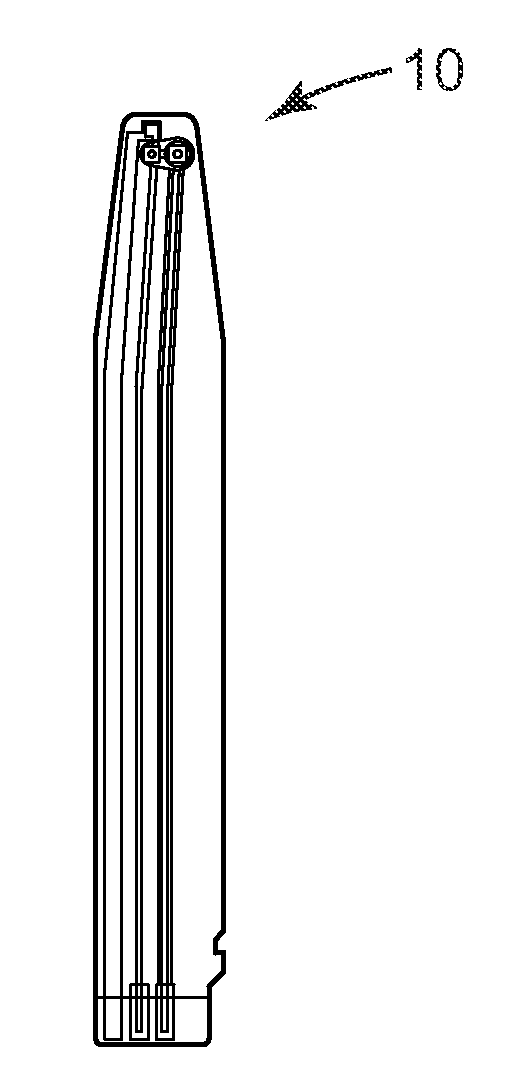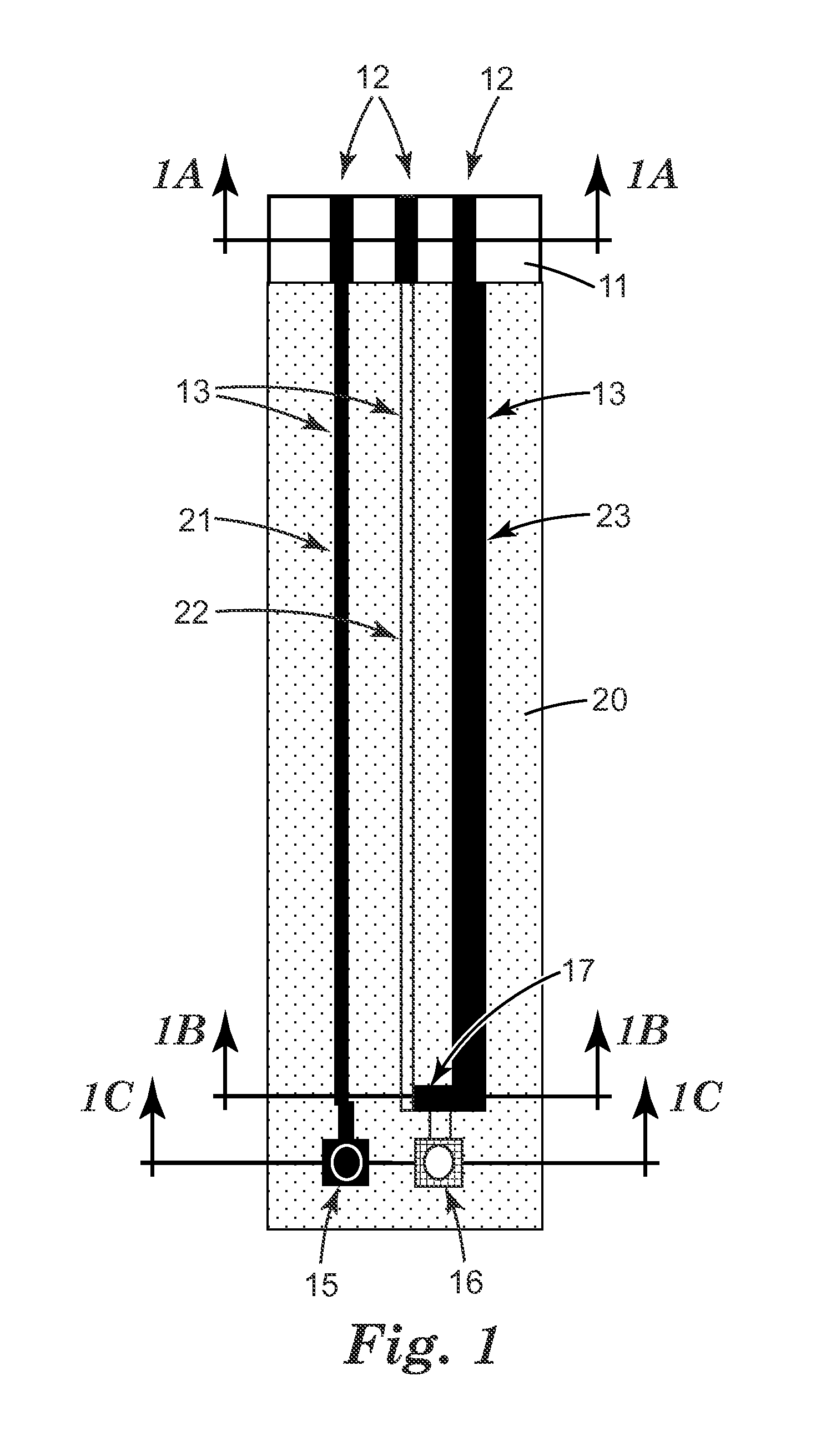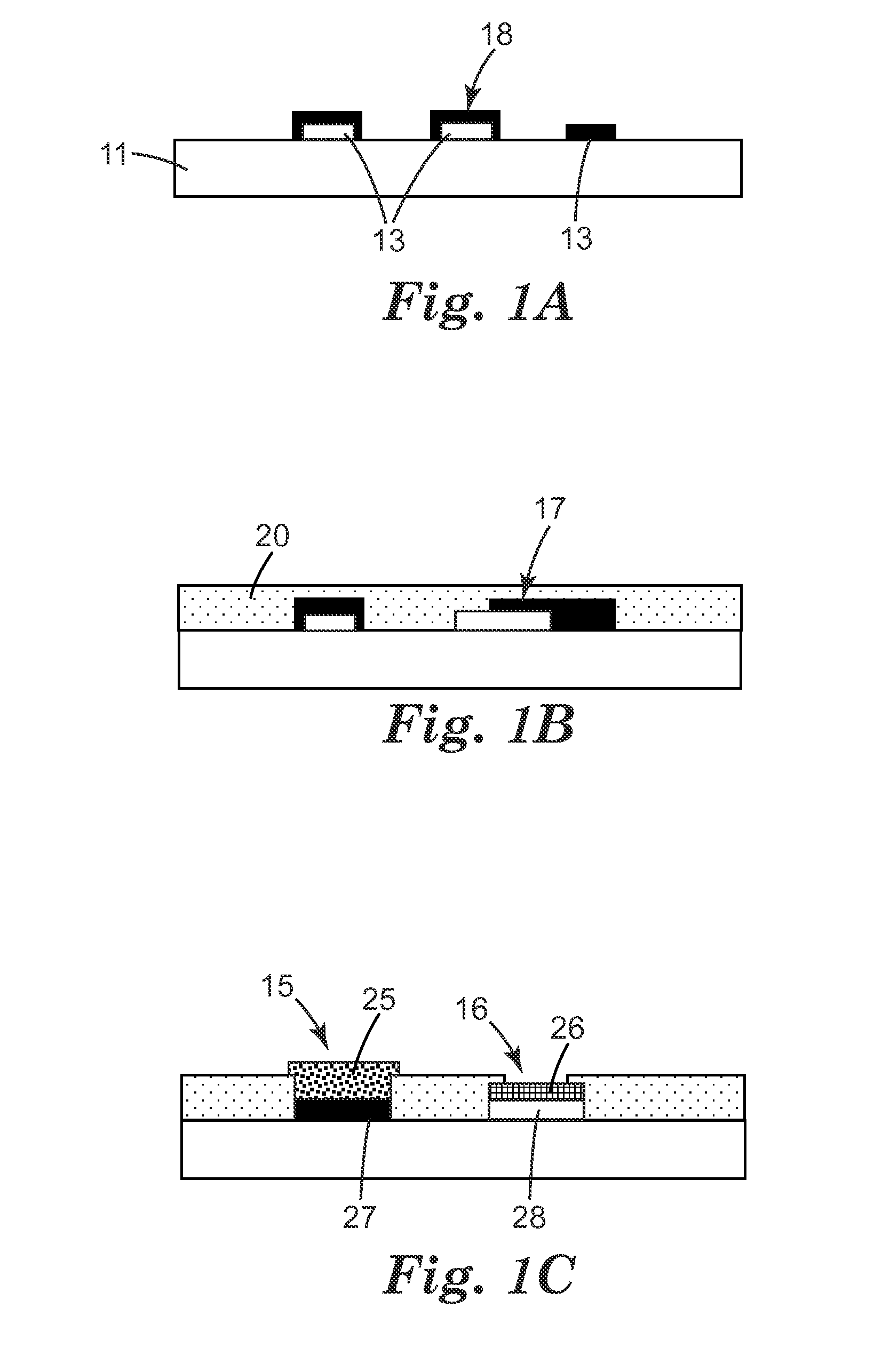Quinhydrone-containing Sensor
- Summary
- Abstract
- Description
- Claims
- Application Information
AI Technical Summary
Benefits of technology
Problems solved by technology
Method used
Image
Examples
example 1
Preparation of Quinhydrone Ink
[0108]The following solutions were prepared at 23° C.
Solution 1:
[0109]5 g of hydroxypropylmethylcellulose (marketed under trade designation METHOCEL E 15 by the The Dow Chemical Company, Wilmington, Del., USA (methoxy content 28-30%, hydroxypropyl content 7-12%; viscosity of 2% solution in water 12-18 mPa·s) was added to 95 g of distilled water under stirring at 2000 rpm. After complete addition (within about 1 min) of the hydroxypropylmethylcellulose, the solution was then stirred for 5 hours at 400 rpm.
(Benzoquinone) Solution 2:
[0110]3.00 g Benzoquinone (Fluka, No 12309) was added to 317.00 g of distilled water under stirring at 500 rpm and then mixture was stirred at 500 rpm until the substance dissolved to form a clear yellow solution.
[0111]A 48.00 g aliquot of the Solution 1 was then added and then the solution was stirred for 2 min at 400 rpm.
(Hydroquinone) Solution 3:
[0112]3.056 g of Hydroquinone (Riedel.de-Haen, min. 99.5%, No. 15616) was added ...
examples 2 and 3
Preparation of Sensors
Example 2
[0118]A sensor strip (65×9 mm)—having a tip similar to that illustrated in FIG. 1—was constructed. A polyester film (200 μm thick marketed under the trade name Melinex 329 by Du Pont Teijin Film U.S. Limited Partnership, Hopewell, USA) was used as the substrate. Using a screen-printing process—similar to that illustrated in FIG. 2—a silver-containing ink (marketed under trade designation Electrodag 479SS by Henkel KGaA, Düsseldorf, Germany) was printed on the substrate and cured at 120° C. for 10 min. In a second step a carbon-containing ink (marketed under trade designation Electrodag 423SS by Henkel KGaA, Düsseldorf, Germany) was printed and cured at 120° C. for 10 min. (The connection pads, conductive paths, conductive electrode bases (each base had of a size of about 1.5 by 1.5 mm and a median thickness of about 10 μm) as well as the thermocouples were thus formed.) Ag / AgCl-containing ink (marketed under trade designation 5874 by Du Pont Ltd., Bris...
example 3
[0120]Sensors were prepared like that of Example 2, except prior to application of quinhydrone ink, an atoll was printed onto the protective-dielectric layer using a dielectric material (marketed under trade designation 5015 by DuPont Electronic Technologies) and such that the reference electrode and the carbon-containing conductive electrode base were surrounded. The maximum height of the atoll was 60 μm and the atoll was generally oval in form approximately 4.6 mm in length by 2.8 mm in width.
PUM
| Property | Measurement | Unit |
|---|---|---|
| Temperature | aaaaa | aaaaa |
| Temperature | aaaaa | aaaaa |
| Fraction | aaaaa | aaaaa |
Abstract
Description
Claims
Application Information
 Login to View More
Login to View More - R&D Engineer
- R&D Manager
- IP Professional
- Industry Leading Data Capabilities
- Powerful AI technology
- Patent DNA Extraction
Browse by: Latest US Patents, China's latest patents, Technical Efficacy Thesaurus, Application Domain, Technology Topic, Popular Technical Reports.
© 2024 PatSnap. All rights reserved.Legal|Privacy policy|Modern Slavery Act Transparency Statement|Sitemap|About US| Contact US: help@patsnap.com










